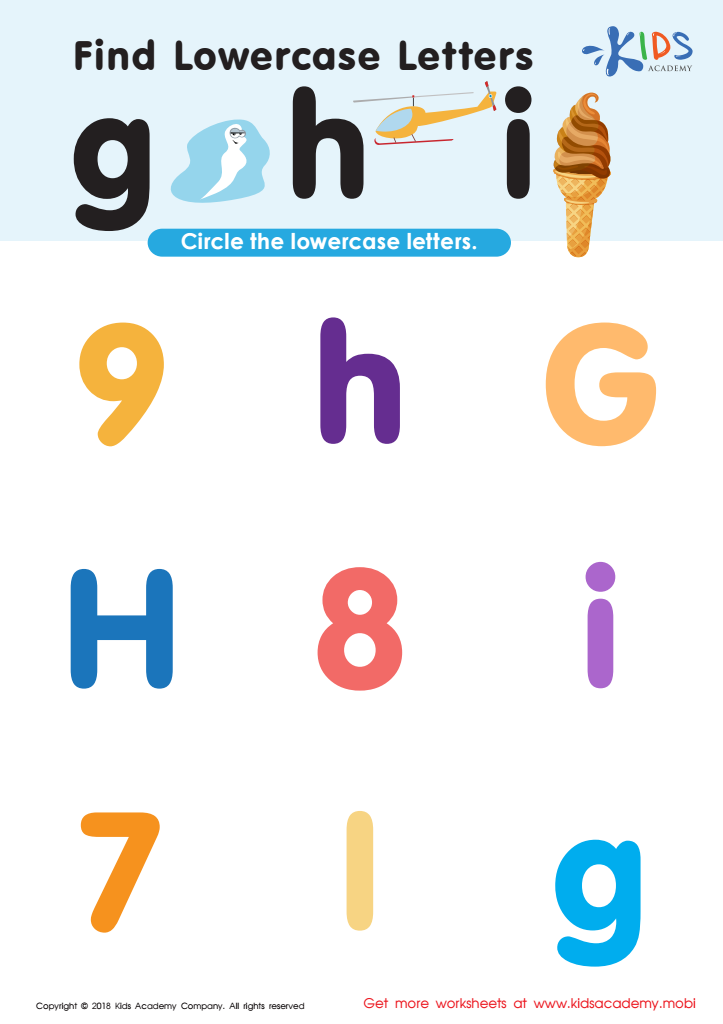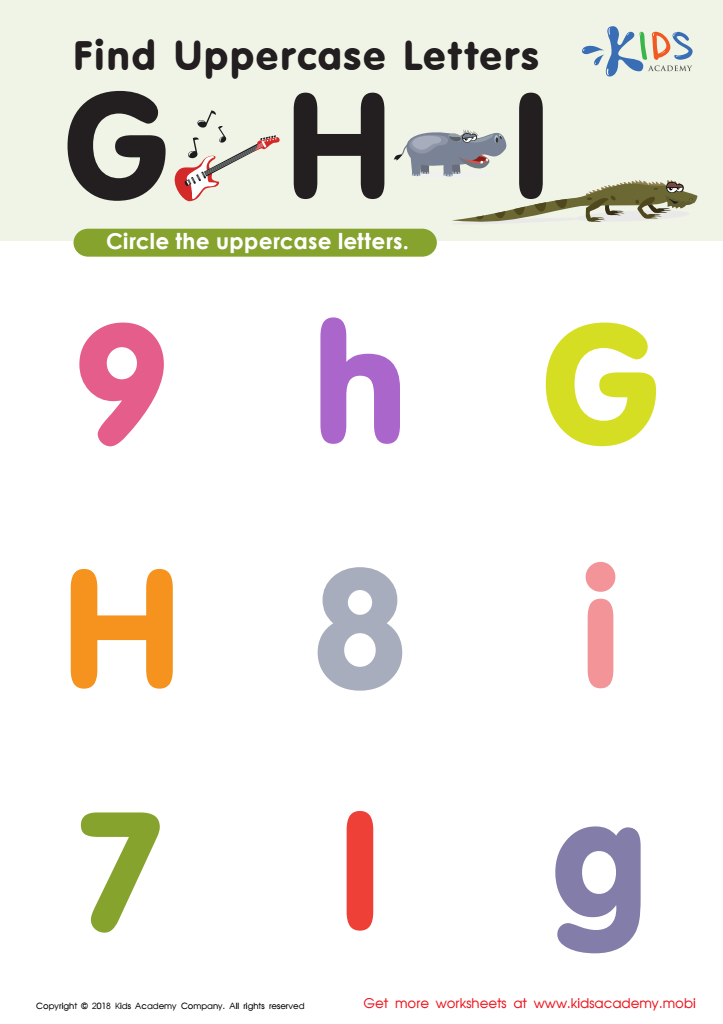Visual discrimination Normal Letter Recognition Worksheets for Ages 3-6
4 filtered results
-
From - To
Welcome to our engaging collection of Visual Discrimination Normal Letter Recognition Worksheets designed specifically for children aged 3-6! These interactive worksheets focus on enhancing young learners' ability to recognize and differentiate between letters. Through fun activities, kids will develop their visual discrimination skills, a crucial foundation for reading and writing. Each worksheet is tailored to stimulate curiosity and support early literacy, making learning enjoyable and effective. With colorful illustrations and varied exercises, children will be excited to practice letter recognition while building essential skills. Perfect for both home and classroom use, our worksheets foster a love for learning at an early age!


Find Lowercase Letters g h i Worksheet


Find Uppercase Letters G, H, and I Worksheet


Find Lowercase Letters y z Worksheet


Find Uppercase Letters V, W, X Worksheet
Visual discrimination and normal letter recognition are crucial developmental skills for children aged 3-6. As they embark on their literacy journey, the ability to differentiate between letters, shapes, and patterns plays a significant role in reading readiness. Visual discrimination involves recognizing similarities and differences in visual input, which helps children identify letters accurately. This skill is foundational for learning to read and write, as it allows children to connect sounds to the correct letters and words.
For parents and teachers, fostering these skills early on can prevent learning difficulties later. Engaging children in activities that enhance visual discrimination, such as sorting games, letter-focused puzzles, and matching activities, not only makes learning fun but also reinforces essential cognitive skills. Additionally, children who struggle with visual discrimination may experience frustration in their learning journey, leading to decreased motivation and confidence.
By prioritizing visual discrimination and letter recognition, adults contribute to a child’s overall academic success and self-esteem. It lays the groundwork for literacy, enabling them to navigate the educational landscape with greater ease. Thus, both parents and teachers play a vital role in supporting these developmental milestones through targeted activities and consistent reinforcement.
 Assign to My Students
Assign to My Students















